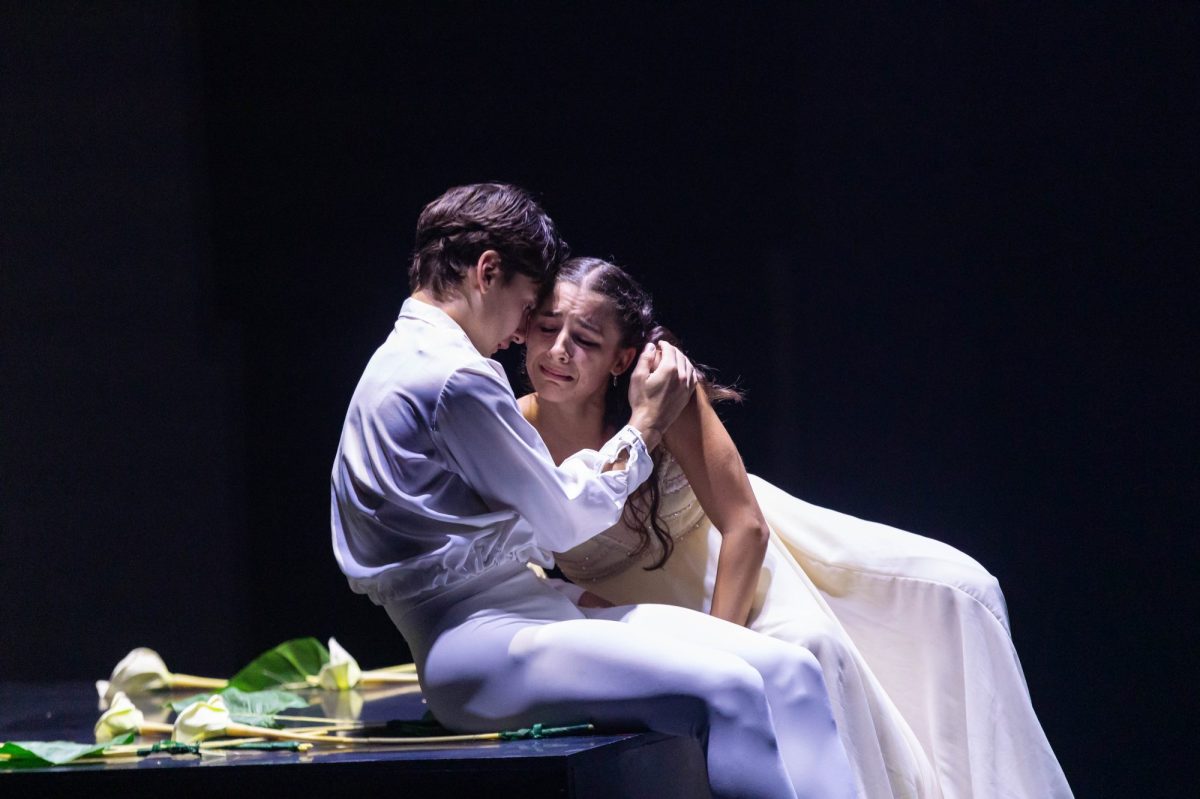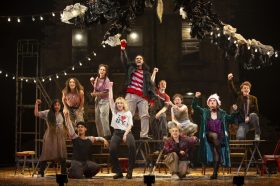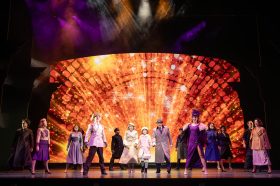In the world of ballet, challenges, like difficult dance moves, should be overcome with grace. For Joel Burke, Artistic Director of Ballet International Gala (BIG), the COVID-19 pandemic and climate events like Cyclone Alfred presented obstacles that would have deterred many, but instead became the unlikely foundation for one of Australia’s most remarkable dance success stories, based in Brisbane.
“We started in the middle of COVID, during snap lockdowns when no long-term productions were happening in state theatres like Queensland Performing Arts Centre,” Burke explains, recalling the company’s unlikely genesis. “Recently, due to the cyclone, we’ve had flooded studios and power outages.”
Adaptability, which began as necessity has blossomed into a touring powerhouse now presenting its sixth gala production. The company’s formation story has all the dramatic elements of a ballet itself. To initiate the first gala performance, the company underwent two weeks of quarantine on a property with international dance stars – an unexpected bonding experience that laid groundwork for what would become Australia’s first international ballet production after COVID restrictions eased.
“Our first show sold 6000 tickets,” Burke recalls with modest pride. “By our Nutcracker production, we were selling out everywhere. In Melbourne, 12,500 tickets were gone in four days.”
A classical tale, reimagined
The company’s current adaptation of Romeo and Juliet represents Ballet International Gala’s most ambitious project yet – a full-length ballet with over 100 performers that has required significant investment in sets, costumes and choreography. The production has expanded to tour six Australian cities, evolving significantly since its premiere.
“Our first Romeo and Juliet taught us a lot about set creation,” Burke admits. “We’ve learned what travels well in touring and what doesn’t. We’ve really polished it; the sets and costumes have been completely redesigned. Our designers are great – creating pieces that are both robust and malleable.”
This adaptability proves essential when performing in venues as varied as Melbourne’s Hamer Hall – which lacks traditional wings, flyers and curtains – and Adelaide’s theatres with their contrasting configurations. Burke describes it as “a game of LEGO” with the company having just one day in each venue to adapt its production.
“For Juliet’s balcony scene, we’re creating the illusion that you’re opening to infinity,” he explains. “Each venue requires different solutions to achieve the same emotional impact.”
International talent, unexpected challenges
First position dancer Alex Campbell recounts learning his role on the plane en route to a performance, while two dancers from Kazakhstan barely made it out of their country during civil unrest.
“There was a riot and they might not [have made] it from the airport,” Burke recalls.
Such behind-the-scenes chaos is invisible to audiences – embodying what Burke calls “the swan that glides gracefully on top, not revealing the effort beneath”.
The company’s international connections stem partly from Burke’s involvement with prestigious dance competitions. “Ervin [Zagidullin, one of the principal dancers] and I met at the Prix de Lausanne,” he explains.
Many company members have been working together since they were 18. In this season’s production of Romeo and Juliet, Zagidullin dances as Tybalt, which Burke has adapted in his production to be a much more substantial role.
Balancing tradition and innovation
Some ballet aficionados may raise eyebrows at a few of BIG’s artistic choices. “We use Tchaikovsky alongside Prokofiev,” Burke reveals. “Purists don’t like it, but the full Prokofiev score has a lot of repetition. We’ve selected the classical well-known pieces, structured into three acts, but running just over two hours.”
This accessibility is central to Burke’s vision. “It’s easy for the audience to understand what’s going on. It’s not just about the steps and the dancing – you are telling a story that’s so relatable. Most people have felt heartbreak and the loss of someone they love.”
Emotional depth in performance
The dancers approach their roles with remarkable psychological intensity. Emilia Bignami, who is dancing as Juliet, says: “[For] some performances I draw on my own experiences; as Juliet I remember times I’ve been heartbroken. Our acting coach gave us the script to connect with the characters beyond just the choreography.”
For Zagidullin, Burke created a striking solo that “catches people by surprise”. The second solo concludes the first act with a fury rarely seen in classical ballet. “It’s a rare thing in ballet to see a male dancer like that – with open palms, almost Spartacus-like in intensity,” he says.
Choreographing a whole new version of Romeo and Juliet, while reinterpreting some of the characters and story, demonstrates the scale of Burke’s ambition for the touring company.
BIG goes to great lengths with preparation for the roles, as Burke explains: “We had intimacy coaching with Chelsea [Thomas] – who was my acting coach when I was younger. We travelled to London and saw every single Shakespeare play together, so we have a shared love for every aspect of theatre. It’s about making the characters real and human, getting back to the heart of the story.”
Where other productions may have Romeo entering the ball for a 15-minute sequence, Burke’s version guides the audience through a more focused, emotionally resonant scene.
As BIG looks toward its next story ballet (details still to be confirmed), the company carries forward the lessons learned from bringing Romeo and Juliet to stages across Australia: that even in the most challenging circumstances, beauty can rise, stories can be told anew, and audiences will respond to passion and authenticity on stage.
In a dance world still recovering from pandemic disruptions, and Brisbane still recovering from flood events, BIG’s success suggests that sometimes the most beautiful performances emerge from the most difficult times – much like the star-crossed lovers at the heart of the company’s signature production.
Following performances in Sydney and Adelaide, Ballet International Gala’s tour of Romeo and Juliet continues to Melbourne (26 April), Hobart (3-4 May), Newcastle (24 May) and Wellington (27-28 June).





